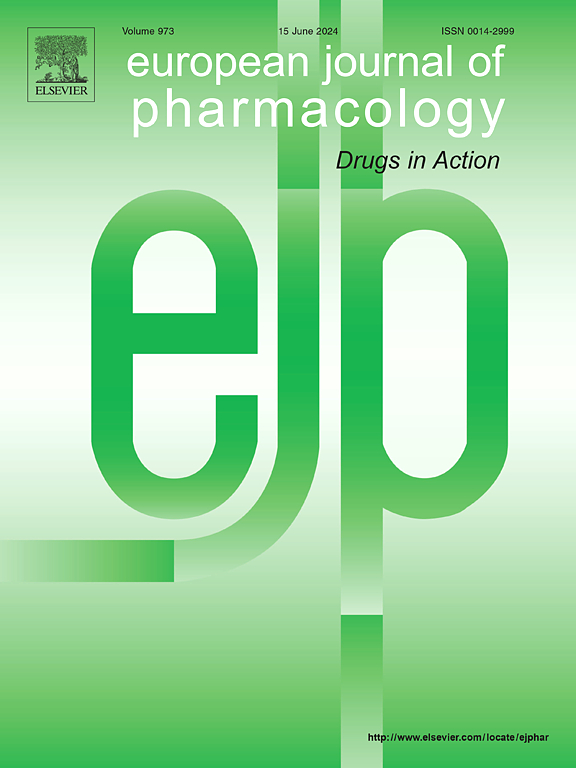Empagliflozin attenuates renal tubular ferroptosis in preeclampsia via tazarotene-induced gene 1
IF 4.7
3区 医学
Q1 PHARMACOLOGY & PHARMACY
引用次数: 0
Abstract
Preeclampsia (PE) is a serious pregnancy complication characterized by elevated blood pressure and a major cause of maternal and perinatal morbidities, also known to increase the risk of chronic kidney disease. Mechanisms underlying PE-induced kidney injury remain unclear. Anti-angiotensin II type 1 receptor agonistic autoantibody (AT1-AA) is reported to participate in the pathogenesis of PE-induced kidney injury. Our previous study replicated the major features of PE in pregnant mice by administration of intravenous injection of AT1-AA and found that podocyte senescence plays a role in PE-induced kidney injury. Elevated levels of N-acetyl-β-D glucosaminidase (NAG) and kidney injury molecule-1 (KIM-1) in the urine of patients with PE have been reported, indicating renal tubular injury. In this study, we identified the role of renal proximal tubular epithelial cells (PTECs) in PE-induced kidney injury and the therapeutic value of empagliflozin, an anti-diabetic agent, in a murine model of AT1-AA-induced PE. In our study, higher tubular injury score (Control vs. PE: P < 0.0001) show that PTECs are damaged in AT1-AA-induced PE. We identified ferroptosis as one of the cause of AT1-AA-induced PTEC injury by RNAseq, and confirmed the involvement of ferroptosis by detecting ferrous iron (Control vs. PE: P < 0.0001), reduced glutathione (GSH) (Control vs. PE: P < 0.0001) and lipid peroxidation (Control vs. PE: P < 0.0001). Empagliflozin ameliorates AT1-AA-induced PTEC ferroptosis and injury in PE. Furthermore, we demonstrated that tazarotene-induced gene 1 is involved in AT1-AA-induced PTEC injury. These findings suggest that renal tubules are injured in PE and empagliflozin has therapeutic potential for PE-induced PTEC injury.
Empagliflozin 通过他扎罗汀诱导基因 1 减轻先兆子痫患者肾小管铁蛋白沉积症
子痫前期(PE)是一种严重的妊娠并发症,其特点是血压升高,是孕产妇和围产期发病的主要原因,也已知会增加慢性肾病的风险。PE诱发肾损伤的机制尚不清楚。据报道,抗血管紧张素 II 1 型受体激动型自身抗体(AT1-AA)参与了 PE 诱导肾损伤的发病机制。我们之前的研究通过静脉注射AT1-AA复制了妊娠小鼠PE的主要特征,并发现荚膜衰老在PE诱导的肾损伤中起作用。有报道称,PE 患者尿液中的 N-乙酰-β-D 葡萄糖苷酶(NAG)和肾损伤分子-1(KIM-1)水平升高,表明肾小管损伤。在这项研究中,我们确定了肾近曲小管上皮细胞(PTECs)在 PE 诱导的肾损伤中的作用,以及抗糖尿病药物 Empagliflozin 在 AT1-AA 诱导的 PE 小鼠模型中的治疗价值。在我们的研究中,较高的肾小管损伤评分(对照组 vs. PE:P
本文章由计算机程序翻译,如有差异,请以英文原文为准。
求助全文
约1分钟内获得全文
求助全文
来源期刊
CiteScore
9.00
自引率
0.00%
发文量
572
审稿时长
34 days
期刊介绍:
The European Journal of Pharmacology publishes research papers covering all aspects of experimental pharmacology with focus on the mechanism of action of structurally identified compounds affecting biological systems.
The scope includes:
Behavioural pharmacology
Neuropharmacology and analgesia
Cardiovascular pharmacology
Pulmonary, gastrointestinal and urogenital pharmacology
Endocrine pharmacology
Immunopharmacology and inflammation
Molecular and cellular pharmacology
Regenerative pharmacology
Biologicals and biotherapeutics
Translational pharmacology
Nutriceutical pharmacology.

 求助内容:
求助内容: 应助结果提醒方式:
应助结果提醒方式:


